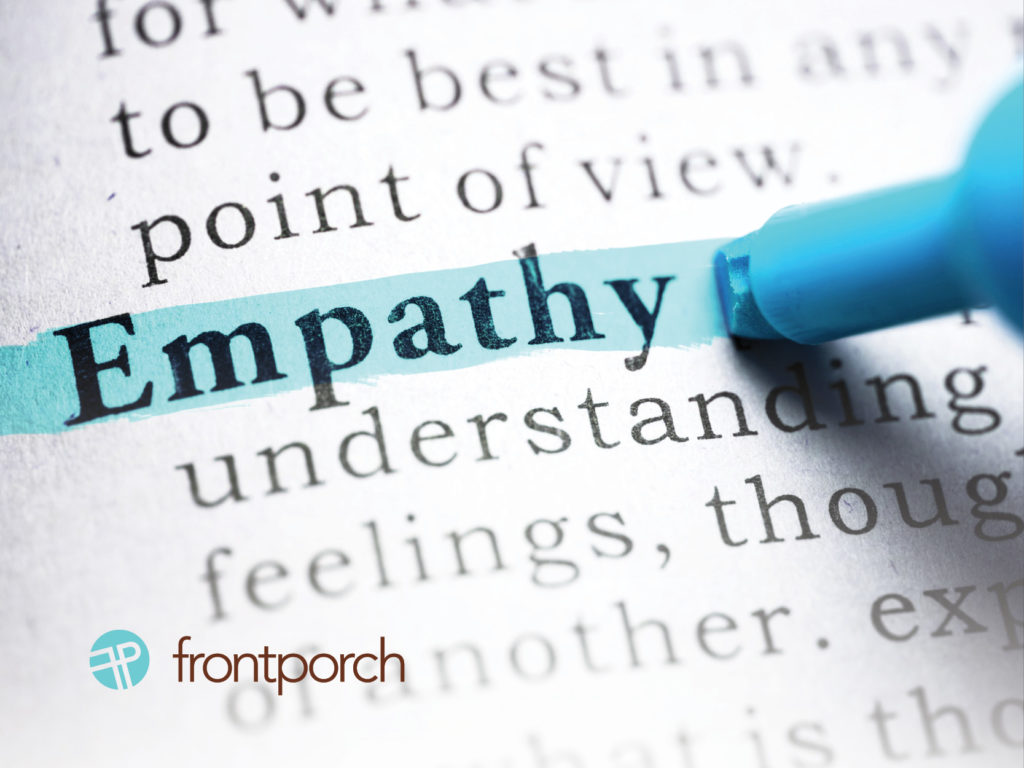
Empathy. Understand and share the feelings of another. More relevant in our country now more than ever.
Like many, last week on the Porch was spent defrosting from the massive winter storm.
Natural disasters occur. Business owners and leaders lead with empathy.
Heed these marketing and communication 101s:
- Safety first. Focus on the wellbeing of your team, then your clients. Reach out to check on them, their families and business. Focus only on their immediate needs and any help you may be able to offer. Show genuine empathy for those in crisis. Everything else waits.
- Teamwork makes the dream work. Thanks to one of our amazing team members, we had two co-working spaces. We were able to use that to communicate with our clients and to help them manage their internal and external business messages. In turn, it was easier for our clients to focus on their own team’s needs. Rally the troops that are available and get to work focusing on others’ needs.
- In addition, dedicate to serving who, how and where you can. We know from our own experience that the smallest gesture can make a powerful impact. This time, the Porch had power so we were able to offer our space and internet, and laundry room, to our Clients and friends who did not. Other clients had water their neighbors did not and eagerly gave of their own resources. Others may simply need an ear to listen. Make it a point to let your clients know you are there to help them in any way you can, not only with the needs that earn you income.
- After that, patience is a virtue. Rethink planned marketing initiatives.
- Email marketing: Your communication can wait when other people are in crisis.
- Social media posts: Meet your customer or Client where they are. During these times, emotions are highly-charged. Be authentic and empathetic.
- Press releases: Don’t send press releases during times when a portion of the country is going through damaging events. Timing is everything.
Most importantly, extend empathy. There will come a time when you are facing your own unexpected storm and will need someone else to freely offer it to you.
In conclusion, we hope you and yours are safe, warm and damage-free. Client service is not simply our job; it is our heart.
Please reach out if we can help you.





